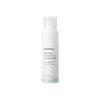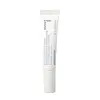What's inside
What's inside
 Key Ingredients
Key Ingredients

 Benefits
Benefits

 Concerns
Concerns

No concerns
 Ingredients Side-by-side
Ingredients Side-by-side

Water
Skin ConditioningGlycerin
HumectantButylene Glycol
HumectantAlcohol Denat.
AntimicrobialDipropylene Glycol
HumectantAmmonium Acryloyldimethyltaurate/Vp Copolymer
1,2-Hexanediol
Skin ConditioningTorreya Nucifera Seed Oil
EmollientHydroxyethyl Acrylate/Sodium Acryloyldimethyl Taurate Copolymer
Emulsion StabilisingPolyglyceryl-6 Caprylate
EmulsifyingPolyglyceryl-4 Caprate
EmulsifyingPolyacrylate Crosspolymer-6
Emulsion StabilisingSilica
AbrasivePropanediol
SolventSalicylic Acid
MaskingTromethamine
BufferingDipotassium Glycyrrhizate
HumectantSodium Metaphosphate
BufferingGlyceryl Caprylate
EmollientSorbitan Isostearate
EmulsifyingXanthan Gum
EmulsifyingRicinus Communis Seed Oil
MaskingDextrin
AbsorbentTheobroma Cacao Extract
Skin ConditioningLimonene
PerfumingJuniperus Communis Fruit Oil
MaskingPinus Sylvestris Leaf Oil
MaskingJuniperus Virginiana Oil
MaskingLavandula Angustifolia Oil
MaskingCitrus Aurantifolia Oil
CleansingLinalool
PerfumingCitrus Limon Peel Oil
MaskingArtemisia Vulgaris Oil
PerfumingPogostemon Cablin Leaf Oil
MaskingCupressus Sempervirens Leaf/Nut/Stem Oil
EmollientWater, Glycerin, Butylene Glycol, Alcohol Denat., Dipropylene Glycol, Ammonium Acryloyldimethyltaurate/Vp Copolymer, 1,2-Hexanediol, Torreya Nucifera Seed Oil, Hydroxyethyl Acrylate/Sodium Acryloyldimethyl Taurate Copolymer, Polyglyceryl-6 Caprylate, Polyglyceryl-4 Caprate, Polyacrylate Crosspolymer-6, Silica, Propanediol, Salicylic Acid, Tromethamine, Dipotassium Glycyrrhizate, Sodium Metaphosphate, Glyceryl Caprylate, Sorbitan Isostearate, Xanthan Gum, Ricinus Communis Seed Oil, Dextrin, Theobroma Cacao Extract, Limonene, Juniperus Communis Fruit Oil, Pinus Sylvestris Leaf Oil, Juniperus Virginiana Oil, Lavandula Angustifolia Oil, Citrus Aurantifolia Oil, Linalool, Citrus Limon Peel Oil, Artemisia Vulgaris Oil, Pogostemon Cablin Leaf Oil, Cupressus Sempervirens Leaf/Nut/Stem Oil
Ingredients Explained
These ingredients are found in both products.
Ingredients higher up in an ingredient list are typically present in a larger amount.
1,2-Hexanediol is a synthetic liquid and another multi-functional powerhouse.
It is a:
- Humectant, drawing moisture into the skin
- Emollient, helping to soften skin
- Solvent, dispersing and stabilizing formulas
- Preservative booster, enhancing the antimicrobial activity of other preservatives
Ammonium Acryloyldimethyltaurate/Vp Copolymer (let's call it AAVC for short) is a synthetically created polymer. It's used as a film-forming agent and used to thicken the consistency of products.
AAVC is able to increase the consistency and viscosity of products due to its large molecule size. It also prevents ingredients from separating.
Glycerin is already naturally found in your skin. It helps moisturize and protect your skin.
A study from 2016 found glycerin to be more effective as a humectant than AHAs and hyaluronic acid.
As a humectant, it helps the skin stay hydrated by pulling moisture to your skin. The low molecular weight of glycerin allows it to pull moisture into the deeper layers of your skin.
Hydrated skin improves your skin barrier; Your skin barrier helps protect against irritants and bacteria.
Glycerin has also been found to have antimicrobial and antiviral properties. Due to these properties, glycerin is often used in wound and burn treatments.
In cosmetics, glycerin is usually derived from plants such as soybean or palm. However, it can also be sourced from animals, such as tallow or animal fat.
This ingredient is organic, colorless, odorless, and non-toxic.
Glycerin is the name for this ingredient in American English. British English uses Glycerol/Glycerine.
Learn more about GlycerinGlyceryl Caprylate comes from glycerin and caprylic acid, a fatty acid from coconut. It has emollient and emulsifier properties.
As an emollient, it helps hydrate your skin. Emollients work by creating a barrier on your skin to trap moisture in, helping to keep your skin soft and smooth.
On the other hand, emulsifiers prevent ingredients (such as oil and water) from separating.
Learn more about Glyceryl CaprylatePropanediol is an all-star ingredient. It softens, hydrates, and smooths the skin.
It’s often used to:
Propanediol is not likely to cause sensitivity and considered safe to use. It is derived from corn or petroleum with a clear color and no scent.
Learn more about PropanediolWater. It's the most common cosmetic ingredient of all. You'll usually see it at the top of ingredient lists, meaning that it makes up the largest part of the product.
So why is it so popular? Water most often acts as a solvent - this means that it helps dissolve other ingredients into the formulation.
You'll also recognize water as that liquid we all need to stay alive. If you see this, drink a glass of water. Stay hydrated!
Learn more about WaterXanthan gum is used as a stabilizer and thickener within cosmetic products. It helps give products a sticky, thick feeling - preventing them from being too runny.
On the technical side of things, xanthan gum is a polysaccharide - a combination consisting of multiple sugar molecules bonded together.
Xanthan gum is a pretty common and great ingredient. It is a natural, non-toxic, non-irritating ingredient that is also commonly used in food products.
Learn more about Xanthan Gum